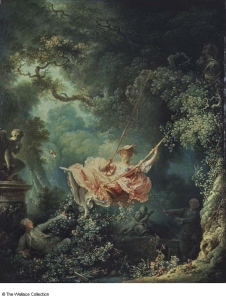Dealing with young people and their (intellectual) expectations and development, and considering the sheer variety of the world of knowledge are among the most important reasons that make a (library) job at the University so exciting.
 While discussing a RefWorks question some time ago with UvA-anthropologist Jitse Schuurmans I not only came to know of the existence of pickup artists and who they are, but also that Schuurmans – who recently started his PhD on the subject at the AISSR research group Dynamics of Citizenship and Culture – had already written a (Dutch) book on the subject in 2010, De versierkunstenaars.
While discussing a RefWorks question some time ago with UvA-anthropologist Jitse Schuurmans I not only came to know of the existence of pickup artists and who they are, but also that Schuurmans – who recently started his PhD on the subject at the AISSR research group Dynamics of Citizenship and Culture – had already written a (Dutch) book on the subject in 2010, De versierkunstenaars.
Should the meaning of ‘pickup’ («a casual encounter with a stranger with a view to having sexual intercourse», Oxford English Dictionaries) be not enough of a clue, the following from the University of Pittsburgh Women’s Studies wiki might prove clarifying: «The seduction community is a transnational male subculture with its origins in the U.S. It consists of pickup artists (PUAs) who systematically work to get better at approaching and attracting women».
This being said, and apart from Schuurmans’ book and ongoing research, are there any scholarly publications on the topic? Searching for ‘pickup artists’ in both the ProQuest-databases and Web of Science (online available through the UvA-Library: restrictions may apply outside the UvA-network) retrieves one relevant peer reviewed article (Hall, J. & Canterberry, M. (2011). Sexism and assertive courtship strategies. Sex Roles, 65 840-853) and several reviews of Neil Strauss’ book The game: penetrating the secret society of pickup artists.
 Given both Strauss’ and the more recent Confessions of a pickup artist chaser: long interviews with hideous men, released this year by Clarisse Thorn, aren’t scholarly publications, and while waiting for Schuurmans’ research output, a valuable exercise – so far information literacy is concerned – is to go through Hall and Canterberry’s references and to note the keywords the databases provide for their article and for Strauss’ reviews: (ProQuest) sexism, prediction, males, internet, females, courtship, “college students”, artists; (Web of Science) “ambivalent sexism”, “assertive behaviors”, courtship, “relationship initiation”, sociosexuality, “nice guy stereotype”, “chat-up lines”, “benevolent sexism”, “hostile sexism”, women, gender, men, personality.
Given both Strauss’ and the more recent Confessions of a pickup artist chaser: long interviews with hideous men, released this year by Clarisse Thorn, aren’t scholarly publications, and while waiting for Schuurmans’ research output, a valuable exercise – so far information literacy is concerned – is to go through Hall and Canterberry’s references and to note the keywords the databases provide for their article and for Strauss’ reviews: (ProQuest) sexism, prediction, males, internet, females, courtship, “college students”, artists; (Web of Science) “ambivalent sexism”, “assertive behaviors”, courtship, “relationship initiation”, sociosexuality, “nice guy stereotype”, “chat-up lines”, “benevolent sexism”, “hostile sexism”, women, gender, men, personality.
How to use such terms in a systematic search for more relevant literature has been the topic of last week’s post. How such notions as ‘sexism’ and ‘courtship’ can possibly lead to the most diverse research areas is aptly illustrated by my immediately thinking of Jean-Honoré Fragonard’s The Swing as significative example of (18th Century) man/woman relationship.
Photo’s: Jitse Schuurmans’ is found on TEDxYouth@Amsterdam, to whose team the UvA-researcher belong. Fragonard’s painting and image belong to the London Wallace Collection.



Leave a comment